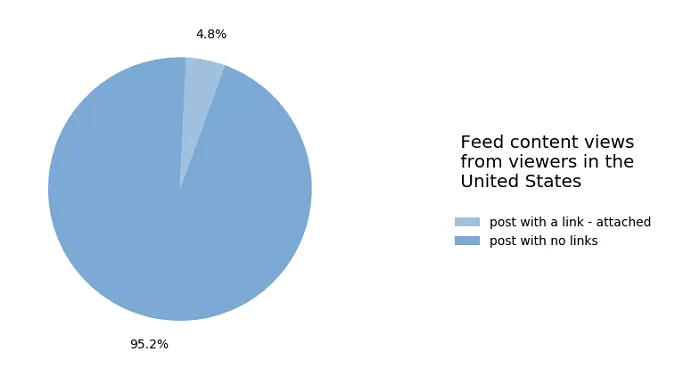Meta has published its latest “Widely Viewed Content Report” for Facebook, which shows what Facebook users were engaging with in Q4 2023.
The report, which Meta first published in August 2021, is designed to dispel the notion that Facebook’s algorithms favor divisive, argumentative, political content, by providing more context around what Facebook users actually see in the app.
Which kind of works, in that it uses graphs like this to show that there are no specific content trends that dominate like you might expect:


But then again, at Facebook’s scale (over 3 billion monthly active users), 0.04% is still potentially significant exposure, so while there is more of a balance to what people see in their feeds, the actual data is still relevant in each instance.
Meta has also been actively shifting away from divisive political discussion of late, and as such, it could be interesting to note what’s gaining traction in its place.
So what were people seeing on Facebook in Q4 last year?
Well, for one, this doesn’t look great:


This is a listing of the most widely viewed Facebook posts in the period, and as you can see, many of them have since been removed or deactivated, potentially for violating Facebook’s rules.
But that hasn’t stopped them from reaching millions of people before being taken away, so while the report’s intended to show that what Facebook users see is more mundane than you’d expect, this doesn’t exactly provide the intended reassurance, as we don’t know what these inactive posts actually were.
In terms of top domains referred to from Facebook, YouTube remains the main beneficiary, followed by Tenor GIFs and TikTok clips.


In terms of specific URLs referred to, it’s mostly Hollywood gossip, with Facebook increasingly resembling the supermarket tabloids.


So in this sense, the report does succeed in showing that Facebook users may not be seeing as much political content as you’d expect. But again, this is a question of scale, and while these top links are being seen by millions of viewers, that doesn’t mean that other URLs aren’t also reaching millions too, especially when you consider that news stories tend to have a shorter shelf life, and are thus less likely to get to the same levels as these gossipy posts.
The report also underlines the shrinking amount of referral traffic from Facebook, with 95.2% of the posts displayed in user feeds not including a link in Q4 2023.


That figure has been shrinking over time. In the first Widely Viewed Content report, published for Q3 2021, 86.5% of the posts shown in feeds did not include a link outside the app. That means that in the last three years, the amount of posts displayed in the Facebook feed that include a link, for U.S. users at least, has shrunk by 66%.
If you were wondering why your referral traffic from Facebook is not at the levels it once was, this would be the reason, with Facebook actively reducing the reach of posts with links, by a significant amount, over time.
Overall, there are no major surprises in the latest report, with Facebook increasingly looking more like a tabloid magazine, and less like a political misinformation machine.
I mean, that’s still there, and this is only feed posts, not those shown in groups, or those shared via DM. Which, increasingly, is where people are sharing, so while this does give you some representation of in-stream Facebook activity, the shift away from public posting, and the rise of short-form video in the app, also skews this data further, making it less representative of people’s whole Facebook experience.
But it does give you some data on key trends, while also showing that organic posts with links are increasingly not welcome in the app.
You can check out Meta’s latest “Widely Viewed Content Report” here.















